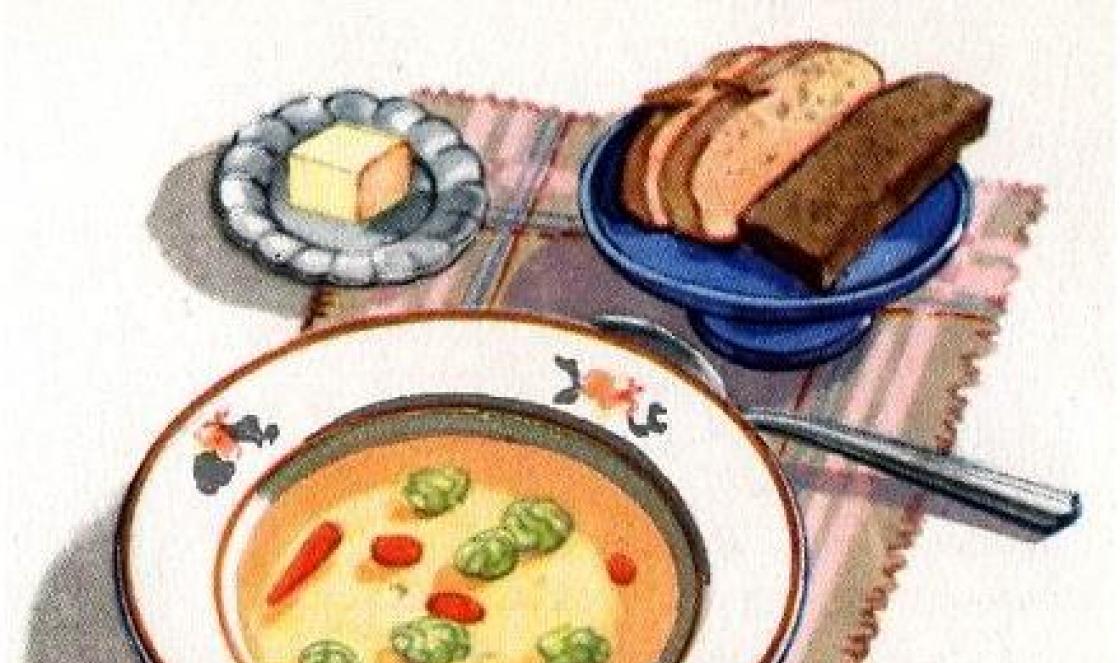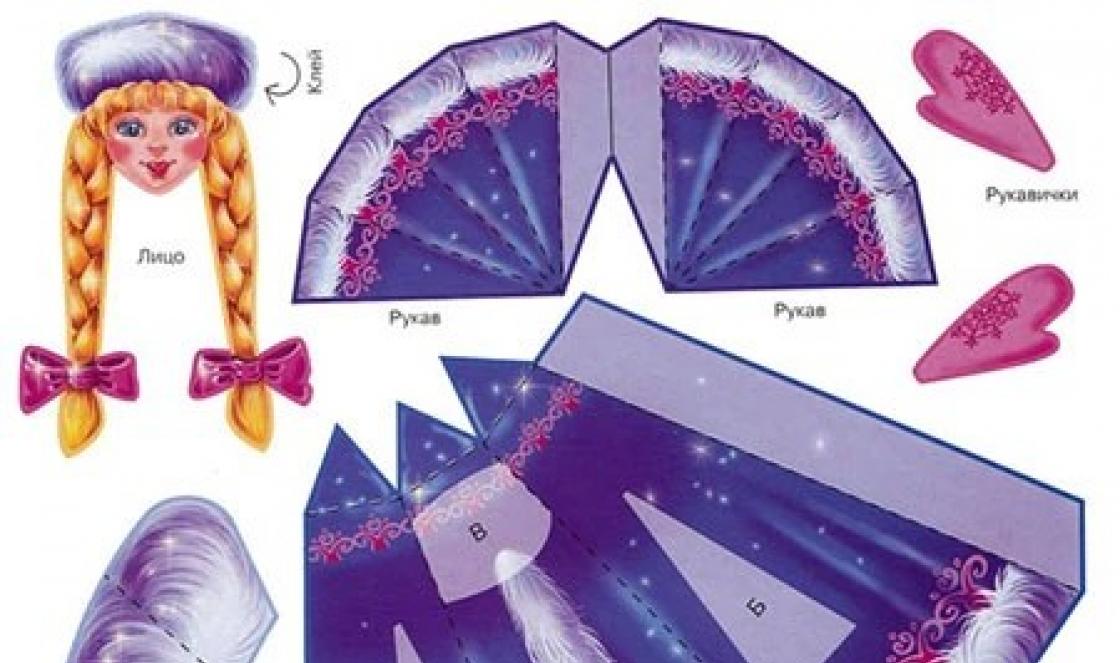New Year's balls made using the quilling technique can become a small work of art. It would seem that it could be simpler than twisting ribbons of paper and gluing them together. If you approach the process creatively, you can turn your house into an illustration for a New Year's fairy tale.

Operating principle
Quilling involves twisting strips of paper and gluing the resulting parts together. You can use your fingers to shape them so that you get not only circles, but also petals, hearts, diamonds, etc.
In the first photo you see an illustration of the idea of updating an old ball. Surely, in a box of Christmas tree decorations you will find an old one that has lost its appeal. It can be updated by pasting it with paper figures.

If you want to please your loved ones not only with a beautiful handmade card, then here is an interesting idea for making it.

It is worth trying to make a more complex typesetting ball from many elements. The presented photos of finished products will certainly inspire you to make a beautiful one.
Materials and tools:
- a set of quilling paper (or colored sheets);
- transparent glue;
- wooden stick.
Additional tools include tweezers, which can be used to conveniently glue parts together without crushing the paper. You will also find multi-colored rhinestones, beads and sparkles useful.
When forming a ball, take your time, connect several elements together, wait until they dry completely, and only then continue.

You can cut strips of paper yourself, but pay attention to the quality of the material; the sheets should not be too thin, otherwise they will get wet and deform when in contact with the glue. Experiment with colors and their combinations; bright Christmas tree decorations look most impressive.
Get down to business in a good mood and you will definitely succeed. DIY decorations will decorate your home and help create an atmosphere of New Year's magic.






During the holidays you always want something unusual and original. Something that no one else has. Various decorations for the New Year, which are produced on an industrial scale, do not always satisfy the requirements of customers. That is why New Year's quilling can be not only a pleasant pastime, but also an ideal option for the most demanding originals.
What is it
First of all, it’s worth understanding what this technique is. New Year's quilling, like any other, is paper rolling. Or rather, an entire art that first appeared in Europe at the end of the fourteenth century. This technique is based on the ability to twist ordinary paper so that unusual figures or ornaments are obtained, which are later compiled into entire compositions. New Year's quilling consists of cards, toys, and crafts on a New Year's theme, made using simple tools.
What you need
This kind of art does not require too many materials: paper and transparent PVA glue. Tools: scissors, awl (sharp, long, thin), tweezers without serrations at the end. The most difficult thing is to choose it. Firstly, the edges of the tweezers should meet one another, without gaps. Secondly, it must cling well, that is, be springy. Otherwise you will end up with very poor quality quilling. New Year's crafts will be sloppy and clumsy.

How to spin
It would seem that it could be simpler - to twist the paper. But not everything is so simple. New Year's quilling, like any other, is a special technique, although not too complicated. First you need to cut the paper into strips, the width of which does not exceed 3-4 mm. You can do this manually, you can purchase ready-made material in a specialized store, or you can pass the sheet through a shredder, which will neatly and evenly dissolve it into strips. The paper is then wound onto the tip of the awl very tightly. After 10 skeins, you can continue to twist the strips by hand, constantly supporting them with your other hand so that the skein does not unravel. The finished twist is glued with glue, creating a composition using the quilling technique. New Year's cards, by the way, are in special demand. Especially if you use your imagination when creating them.

Postcard with a snowman
This is one of the simplest compositions that beginners master first. A very tight skein is rolled out of white paper. PVA glue is applied to the prepared postcard (it can be purchased or homemade). But not the entire area, but only the one where the lower “ball” of the snowman will be located. The skein of paper is gradually loosened in your hands so that it unwinds a little. Then it is placed on the adhesive base and pressed a little, fixing the position. The next skein should be slightly shorter in length so that the second “ball” has a smaller volume, like a real snowman. It is glued in a similar way. The last third “ball” is performed in the same way as the previous ones, but its volume should be even smaller than that of the second. A bucket or hat for a snowman can be drawn on by hand or rolled out of dark paper. The arms and legs are also made using the quilling technique. New Year's cards with snowmen turn out to be especially interesting if you add not only painting, but also sparkles and additional decorative elements. For example, buttons or sequins.

Christmas tree toy
New Year's quilling (with your own hands and crafts made with love) is not only a way to “kill” time, but also an excellent option for a holiday gift. Therefore, beginners should definitely try to make a Christmas tree using this technique. It's not difficult, but the result will surprise even the most demanding originals. To begin with, you will need a sheet of green cardboard, which is rolled into a cone, and the edges are fastened with a stapler so that the figure does not unravel. Droplets will be made from light green or emerald quilling paper (that is, ready-made strips). The technique is not at all complicated. First, ordinary skeins are twisted from strips of greater length than all subsequent ones. When they are ready, they are slightly relaxed in the hands so that the paper unwinds, then one side is squeezed in the hands with the thumb and forefinger. This will give the figure a teardrop shape. PVA glue is applied to the bottom of the cone, and a large finished drop made using quilling technology is pressed against it. New Year's crafts, by the way, can be not exactly green, like real Christmas trees, but any other color. The entire bottom of the cone should be covered with such large droplets. The next row will be smaller, so the stripes will be shortened a little. Medium drops are glued overlapping with large ones, like tiles. And so on until the whole tree is ready. The top can be decorated with a finished star or rolled out of paper using the quilling technique. There is no need to rush when gluing; each row should dry well.

Craft “Snowflake”
Unfortunately, New Year's toys (we mean quilling techniques) are not very durable. Unlike crafts, which are easy to store because they don’t take up much space. Even a child can make a snowflake craft. Small dense skeins are rolled out of white or blue paper, which are then compressed into droplets. The sizes should be as equal as possible so that the craft does not look skewed or sloppy. PVA glue is applied to colored cardboard, then droplets are glued one by one. It is noteworthy that they should be joined with rounded sides, not sharp ones. This is the simplest snowflake without any complex elements. Over time, when you have more experience, you can improve the compositions, making them original and openwork.
At the initial stage, when quilling is just being mastered, you should not take complex work as an example. It is enough to learn how to make simple but universal preparations, which can later be mixed and combined into large compositions. For example, a New Year's quilling snowflake can be made from such shapes as a droplet, a circle, an oval, a heart, or a curl. Don't be afraid to experiment, but don't set yourself too difficult tasks in the first lessons, so as not to be disappointed in this art.
Many people are now interested in this type of needlework, such as quilling. It lies in the ability to create beautiful decorations from rolled strips of paper. with your own hands will not go unnoticed. Even a child will be able to cope with some of the work options, and he will also be interested in mastering new skills.
using quilling techniqueIf the child has never encountered this type of creativity before, then he should be offered a simple version of the product. You can prepare an elegant picture with a winter theme. There is no need to run out to buy special tools; it is better to start getting acquainted with creativity by using the materials at hand. So, for work you will need:
- copier paper;
- scissors;
- glue, pencil, ruler;
- special tool or wooden skewer;
- glitter, paint.

You can prepare such quilling crafts for the New Year for friends and relatives. You can decorate a room or school office with snowflakes.
Christmas tree using quilling techniqueThis toy requires green and brown paper and glue. Let's get started:

The result was excellent paper crafts; quilling for the New Year can be used to decorate any room. Even preschoolers can handle such Christmas trees.
DIY craft ideas using quilling technique for the New Year
By rolling the paper you can make many variations of holiday items. It is important to take into account their degree of complexity so that the child is interested in participating in the creative process and is able to cope with the work.

Are you already bored with ordinary Christmas tree decorations, and do you want to make something interesting with your own hands? It’s worth trying to make jewelry using the quilling technique. This simple method of creating crafts from curled paper is now very popular due to the simplicity and availability of materials.
There are ready-made quilling kits on sale, but in order to make a New Year's ball yourself, it is not at all necessary to buy such a kit. All you need is double-sided colored paper, scissors, a wooden stick for twisting, PVA glue, tweezers and a base ball. Foam base can be purchased at the store. Or you can use an old boring Christmas ball. It's better to use plastic rather than glass so you don't accidentally cut yourself.
Any, even the most complex quilling patterns are assembled from simple basic elements:
- Curl - a strip is wound onto a stick, the end remains free
- The coil is twisted, removed from the stick, carefully unraveled to the desired size and the tip is secured with glue
- Drop - the finished coil is squeezed with your fingers on one side, forming a corner
- Eye - the corners are clamped on both sides of the coil
- Ring - the paper is tightly wound onto a thick pencil and secured with glue
Quilling for beginners: basic elements video master class
To make a ball, you need to apply glue to the base in the place where the element will be located, secure it in the right place and let the glue set. And so, step by step, cover the surface with patterns. It is better to do this with tweezers so as not to wrinkle the paper. It's better to start with large parts. For example, collect a flower from drops or a snowflake from diamonds and glue it to the base. Symmetrically place one or more large patterns, and fill the remaining space between them with small coils.
The main thing is not to rush. Having fastened several parts together, you need to wait until they are completely dry, and only then continue to lay out the drawing.
The base will show through the openwork paper. This must be taken into account and colors that match each other must be selected. By choosing a base in a contrasting color, you can get an interesting and unusual result. Quilling on a transparent ball looks airy.

Making New Year's balls using the quilling technique is a fun creative activity that both adults and children will enjoy. Handmade decorations will perfectly complement the New Year's decor and help create a magical festive mood in the house.
She pleased us with a couple more wonderful New Year's ideas, implemented using the quilling technique. The result was very delicate decorations - a wreath and a Christmas ball. Take it into service! Manufacturing technologies are absolutely accessible. Of course, you will need a certain amount of patience. But in creativity, as you know, you can’t do without it. :)
New Year's wreath using quilling technique
During these New Year's days, all creative people are obsessed with crafts, including Christmas wreaths. The same thought also came to me, and I made a New Year’s wreath using my favorite quilling technique.
To work you need:
- quilling paper;
- quilling tool;
- scissors;
- double-sided tape;
— packaging corrugated cardboard;
- thin cardboard;
 We cut out a circle with a diameter of 18 cm from the packaging cardboard with a hole in the center with a diameter of 6.5 cm. We cut out the same circle from white paper and glue it to the cardboard on the back side.
We cut out a circle with a diameter of 18 cm from the packaging cardboard with a hole in the center with a diameter of 6.5 cm. We cut out the same circle from white paper and glue it to the cardboard on the back side.
 To create volume, cut out strips from thin cardboard and glue them to the circle with “arches”, as shown in the photo.
To create volume, cut out strips from thin cardboard and glue them to the circle with “arches”, as shown in the photo.

 We seal the voids between the strips with trapezoidal elements of the appropriate size.
We seal the voids between the strips with trapezoidal elements of the appropriate size.
 Now you need to wind more than 500 paper rolls.
Now you need to wind more than 500 paper rolls.
 Let's give them the shape of a drop. We glue the quilling elements onto a cardboard base in two rows - we get a voluminous, convex wreath.
Let's give them the shape of a drop. We glue the quilling elements onto a cardboard base in two rows - we get a voluminous, convex wreath.
 For decoration, I used bows made from ribbons with lurex (I already showed how to make them), as well as beads.
For decoration, I used bows made from ribbons with lurex (I already showed how to make them), as well as beads.
The result was a New Year's wreath using the quilling technique.
New Year's ball using quilling technique
 I also want to tell you how to use the wonderful quilling technique to decorate a New Year's ball. There is nothing complicated here, you just need patience.
I also want to tell you how to use the wonderful quilling technique to decorate a New Year's ball. There is nothing complicated here, you just need patience.
To work you need:
- a foam ball with a diameter of 10 cm (if you don’t have one, you can replace it with another one or make it yourself from newspapers);
- glue Titan, Moment or the one you are used to;
- ready-made strips for quilling (I cut them myself, the width of my strip is 0.5 cm);
quilling tool;
- ribbon and beads for decoration.
First we make a snowflake. It requires the following elements: a tight roll, an “eye”, an element in the form of an “open heart”. We make the required number of parts and connect everything into a snowflake.
 Transfer the snowflake to the ball and glue it with Titanium glue.
Transfer the snowflake to the ball and glue it with Titanium glue.
After this, we proceed to fill the rest of the surface of the ball, using the following elements for this: loose rolls, “drops” and processed “drops”. I used more than 200 strips of paper to decorate the ball.
 Having filled the entire surface of the ball, we begin to decorate it. We make a bow from a satin ribbon and decorate it with beads.
Having filled the entire surface of the ball, we begin to decorate it. We make a bow from a satin ribbon and decorate it with beads.
The end result was this Christmas tree decoration.






